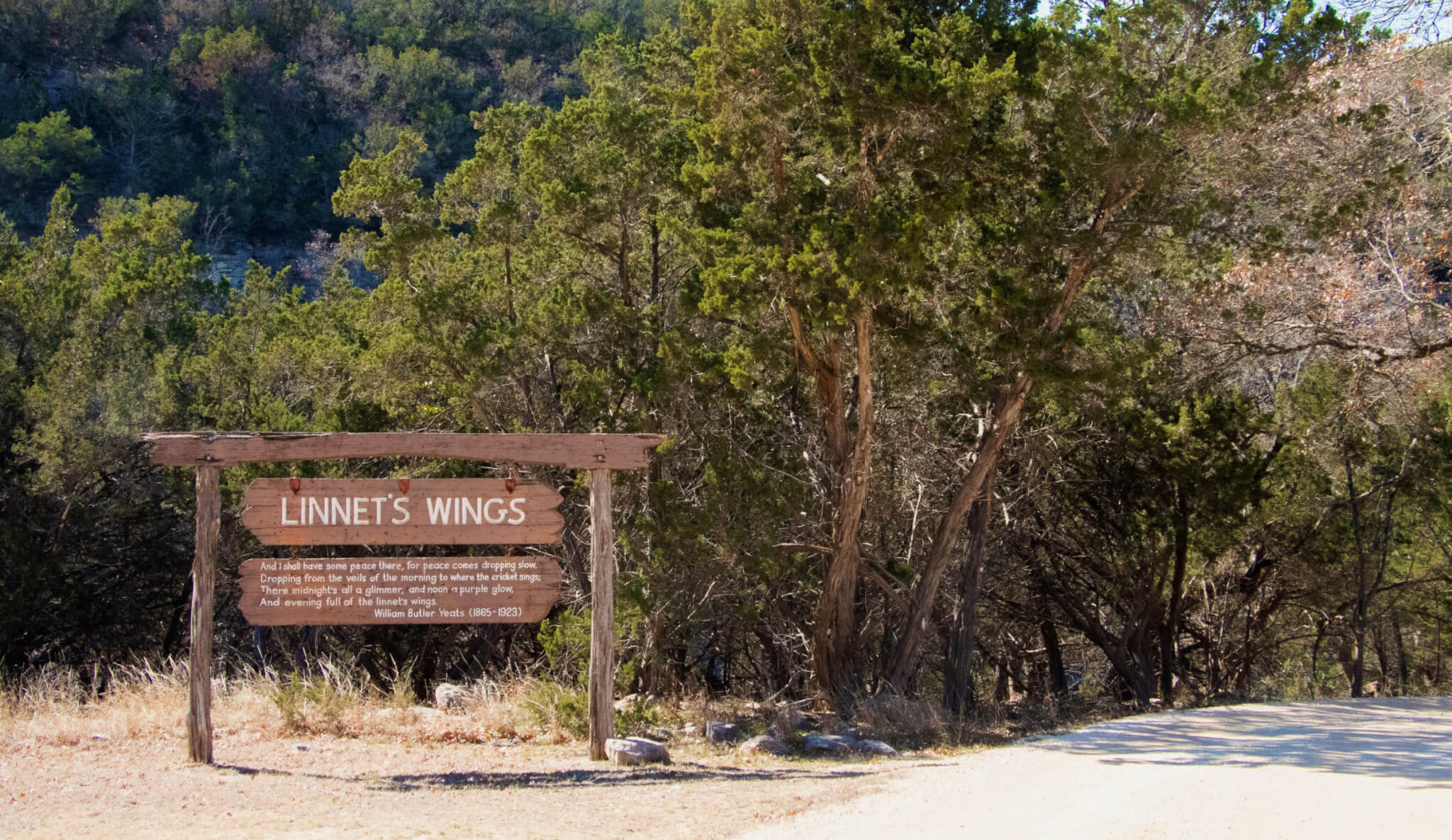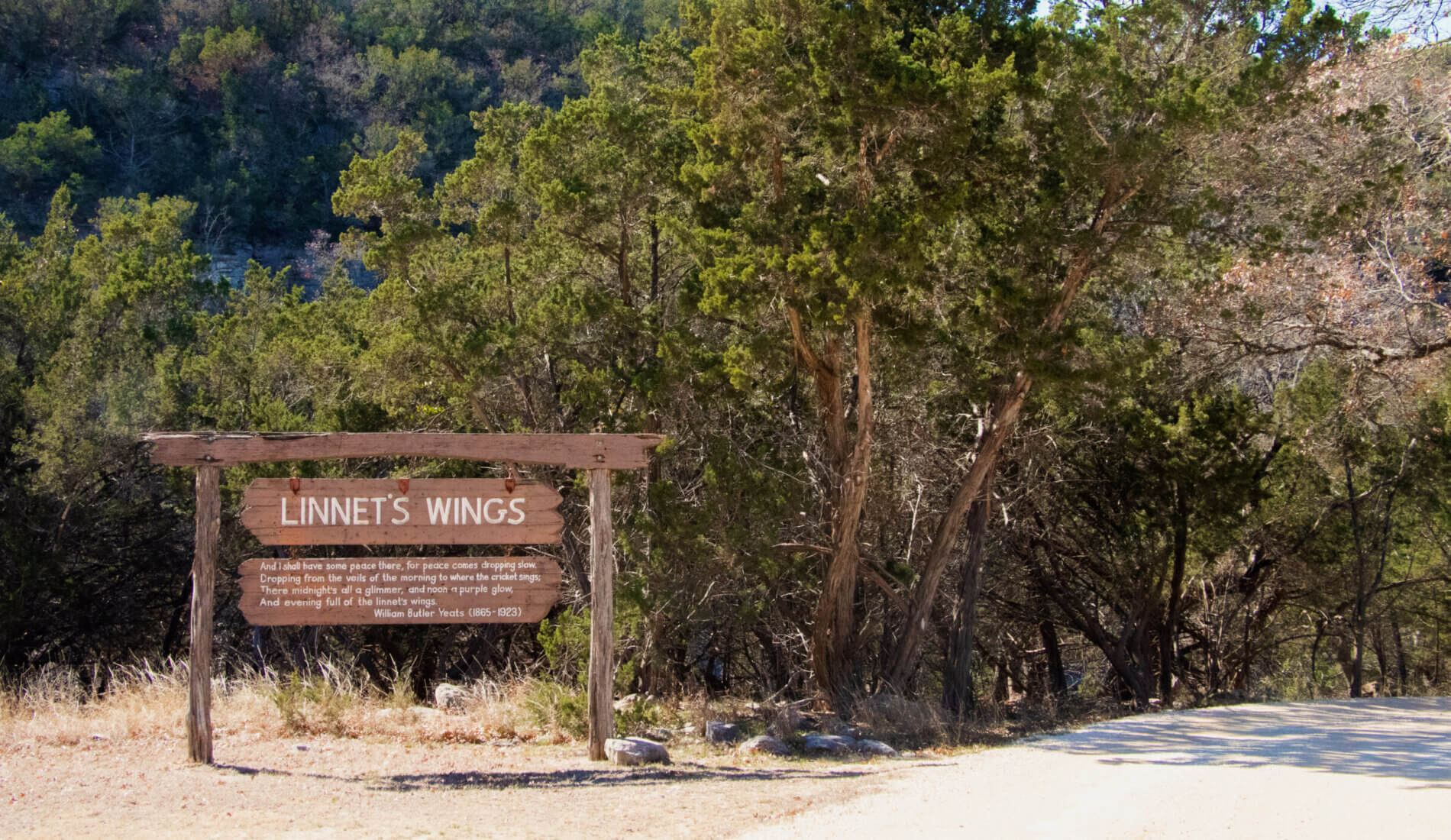

The Lake Isle of Innisfree
William Butler Yeats (1865-1939)
I will arise and go now, and go to Innisfree,
And a small cabin build there, of clay and wattles made;
Nine bean-rows will I have there, a hive for the honey-bee,
And live alone in the bee-loud glade.
And I shall have some peace there, for peace comes dropping slow,
Dropping from the veils of the morning to where the cricket sings;
There midnight’s all a glimmer, and noon a purple glow,
And evening full of the linnet’s wings.
I will arise and go now, for always night and day
I hear lake-water lapping with low sounds by the shore;
While I stand on the roadway, or on the pavements gray,
I hear it in the deep heart’s core.
For decades, the second stanza of “The Lake Isle of Innisfree” by William Butler Yeats has been carved on the entrance sign to Linnet’s Wings on the H. E. Butt Foundation Camp property. The full poem, which is only three quatrains, is a longing lyric for the titular lake island of Innisfree: a small, uninhabited island in Lough Gill, a freshwater lake near Yeats’ childhood home in Sligo, Ireland.
The poem tells his plans of building a cabin of clay, farming beans, and living amongst bees. He can hear and see the place, visiting in his mind even while walking through drab city streets. According to his autobiography, he was struck with his childhood memory of Innisfree while walking through the gray streets of London in 1888, inspired by the trickling sound and beautiful sight of a fountain in a shop window.
The second stanza calls the reader’s attention to the passing colors of the sky, the song of morning crickets, and the flutter of linnets in a singular, musical sentence that inspired Mary Holdsworth Butt to name one of our campsites, Linnet’s Wings.
Linnets are small, red- or brown-breasted birds of the finch family that can be seen through almost all of Europe, aside from the cold Scandinavian north. In Texas, we are more likely to hear the songs of vireos or warblers, but in our busy daily lives we can still want for the peace and long for places that the linnets represent in Yeats’ poem.
In the case of Innisfree—not unlike the Frio Canyon itself—peace and place are synonymous.
Running a restaurant in order to reach kids is not for the faint of heart. Good thing Hubert Brown's heart is strong.
American Indians of Texas and the Foundation came together to better understand which tribes specifically would have visited the Canyon.
President David Rogers reflects on how our programs reflect our spiritual formation values and our desire to help families and children.